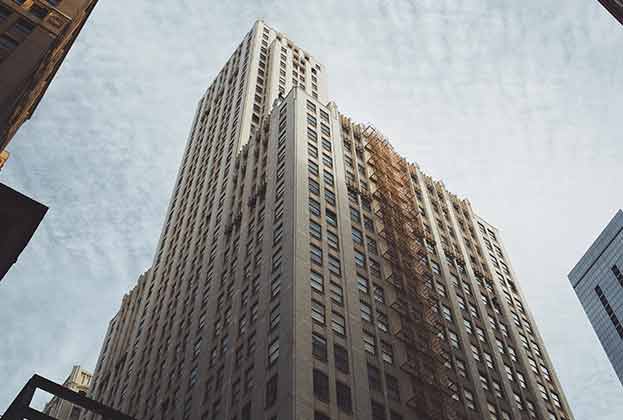Flight to quality prime space contributing to quarterly cost increase
The growth in net effective costs seen in the first quarter of 2023 has tapered off slightly in the second quarter, to 0.3%. While this growth is lower than the first quarter, the consecutive quarterly increases do point to rising levels of cautious optimism among landlords of prime assets as the sustained level of demand from occupiers continues the global ‘flight to prime’.
Across the SPOC markets, annual gross rents have increased by 0.4% over the second quarter. Fit-out costs continue to increase as well, but these rising costs have been slowing – this quarter only increased by 1.2% as supply chain bottlenecks ease and other construction costs slow their rate of growth.
Markets in the Asia Pacific region have proved to be much less susceptible to the upheavals in the occupational markets. Hybrid working has not become an intrinsic working pattern across the region, so there have been higher utilisation rates, and floorplates for occupiers have largely remained the same. This steadiness has carried over to the pricing for prime office space, with most of the markets seeing 0–1% growth in overall costs during the quarter. A notable exception to the trend is Ho Chi Minh City, which has seen growing levels of demand in line with its growing economy. Net effective costs increased by 4.6% due to a combination of rent and fit-out cost increases over the quarter.
European markets and the Americas locations have seen lower levels of change in the second quarter, with most markets seeing marginal levels of cost growth. Dubai and Paris have each experienced rising levels of fit-out costs, with Dubai also seeing some rental increases over the first quarter. Across American markets, rental costs are largely flat, though flagship buildings in the most prime locations are beginning to see marginal increases in rents as the flight to quality continues to gather steam. However, landlords are keeping concessions high in most locations and across all building classes in an effort to attract tenants, so most rental increases are being obscured by the higher concessions in the total net effective costs.
Methodology
The Savills Prime Office Cost (SPOC) Index presents a quarterly snapshot of occupancy costs for prime office space throughout the world, as provided by our expert, local tenant representation professionals and researchers.
The adjusted annual all-in occupancy cost represents real-time transaction terms for 20,000 sq ft (2,000 sq m) of usable space based on a basket of top 5 most expensive properties to calculate ultra-prime average. The North American markets use a sample of very high rent threshold buildings (leasing occurring at the highest end of market).
All costs are reported in a standardised format of USD per sq ft of usable space per annum to account for variations in currency, reflect local payment protocols, and adjust for measurement practices across the globe. We have also factored in the credit value to the tenant generated from abated rent and the cost associated with fitting out the premises in order to provide an ‘all-in’ total occupancy cost in USD per usable square foot.
The fit-out costs were gathered from local Savills teams assuming the leasing scenario described above, plus the following: i) 30% cellularisation with the remainder of space open plan, ii) construction and cabling only (no furniture or professional fees).
Read the articles within Spotlight: Savills Prime Office Costs – Q2 2023 below.
.jpg)
